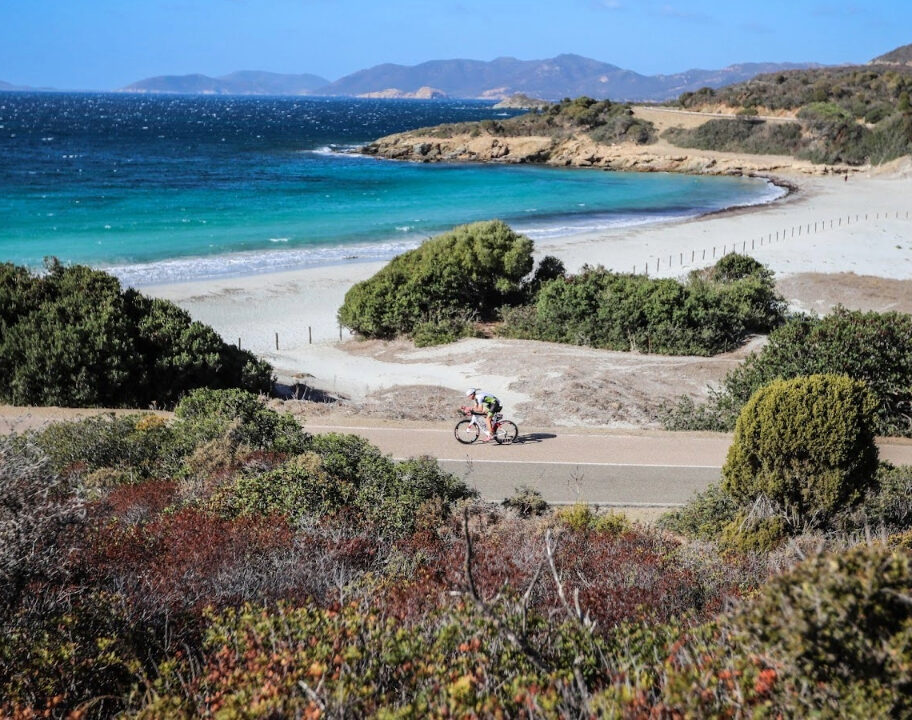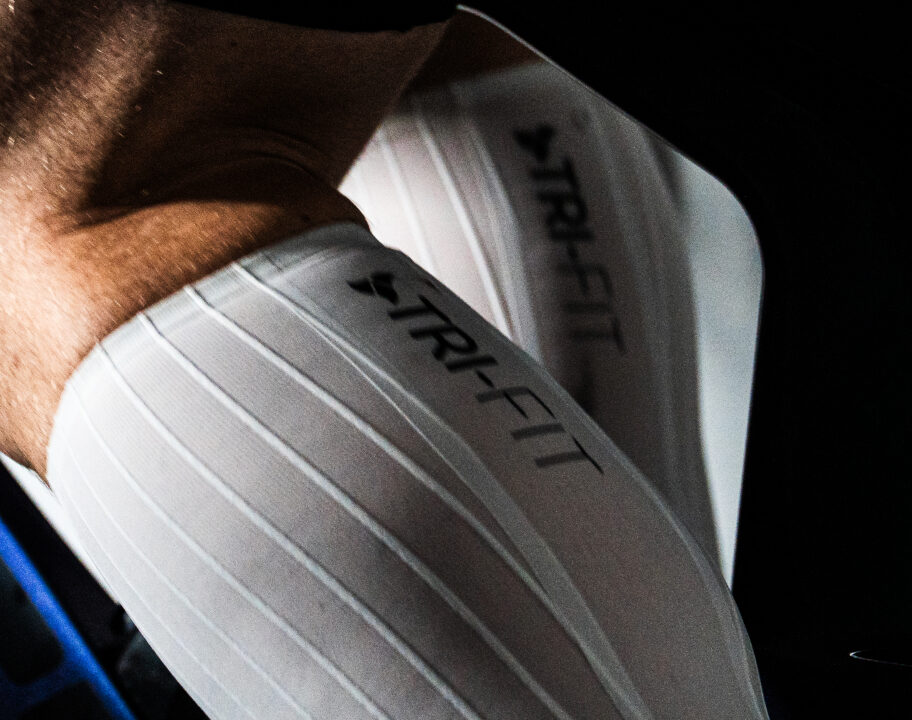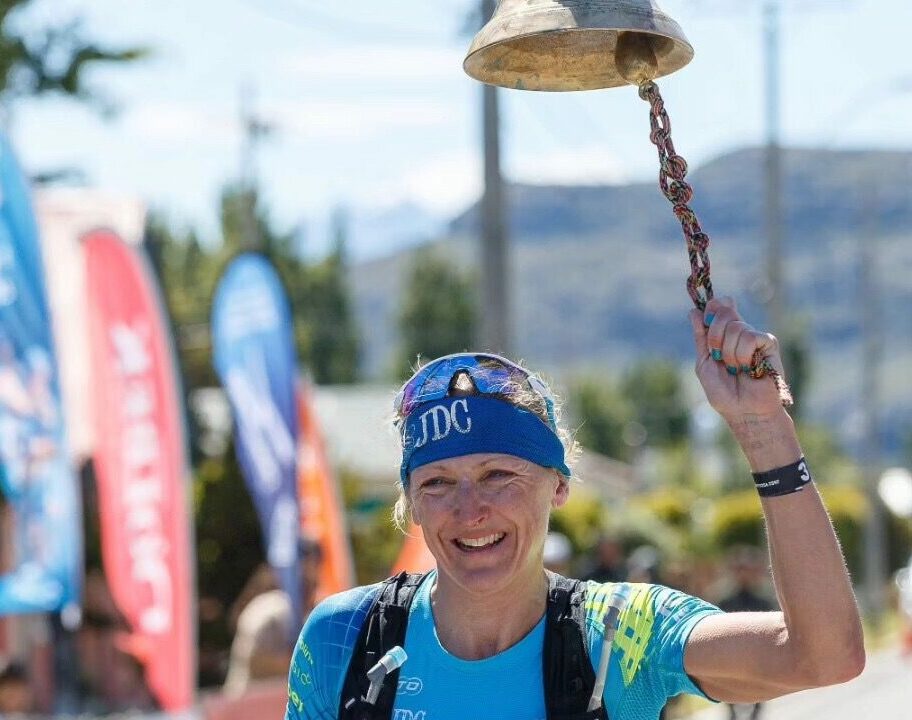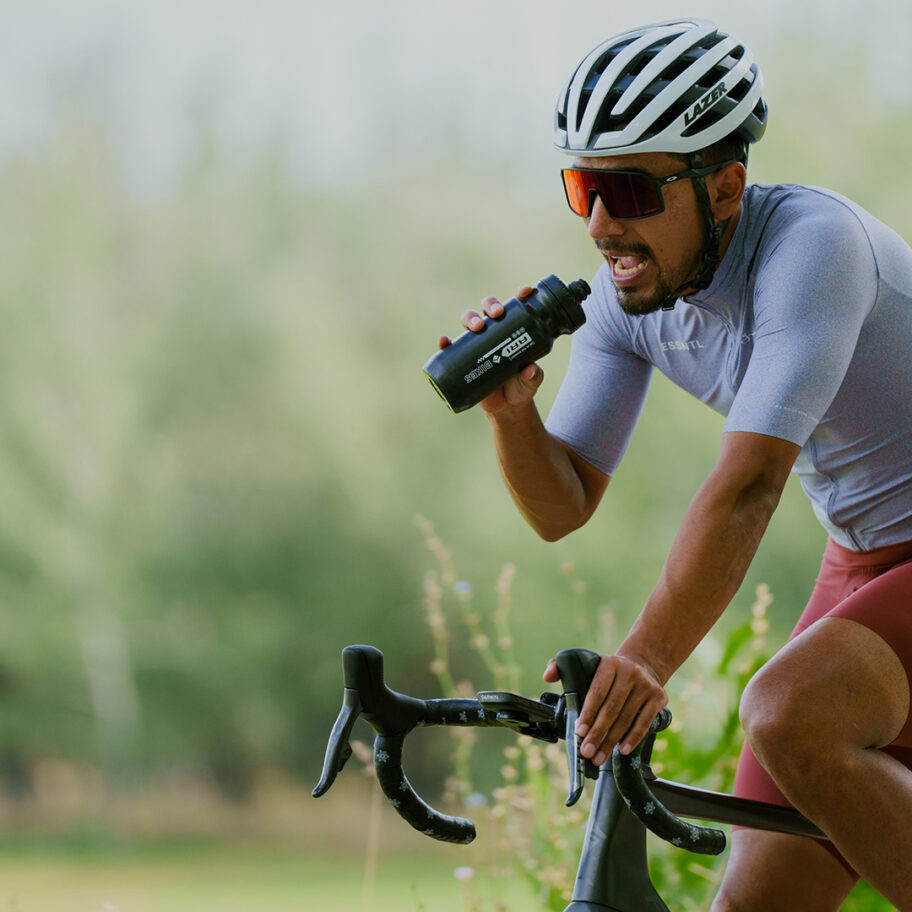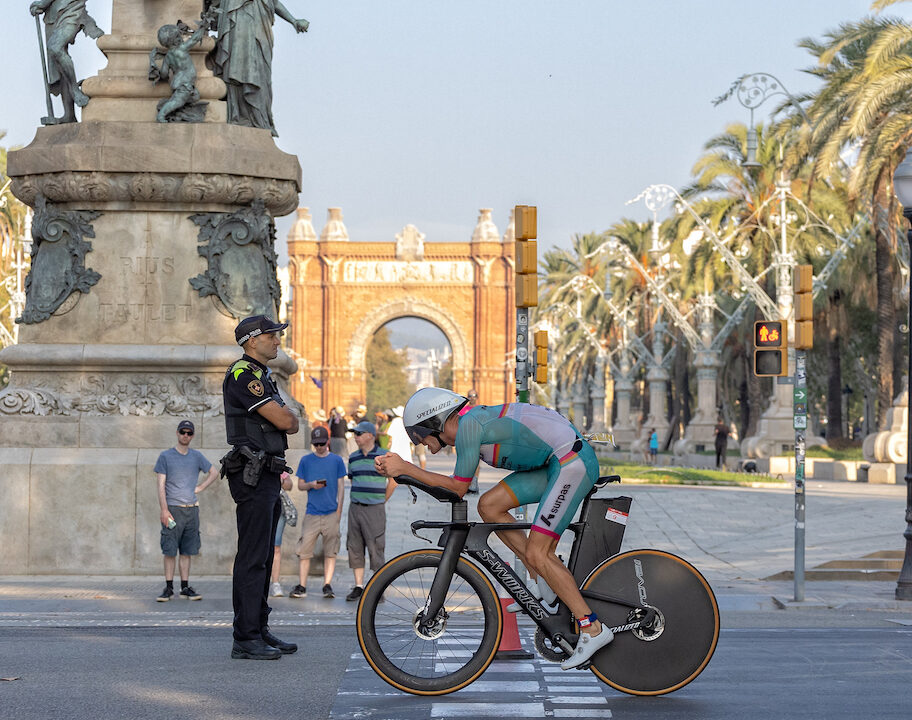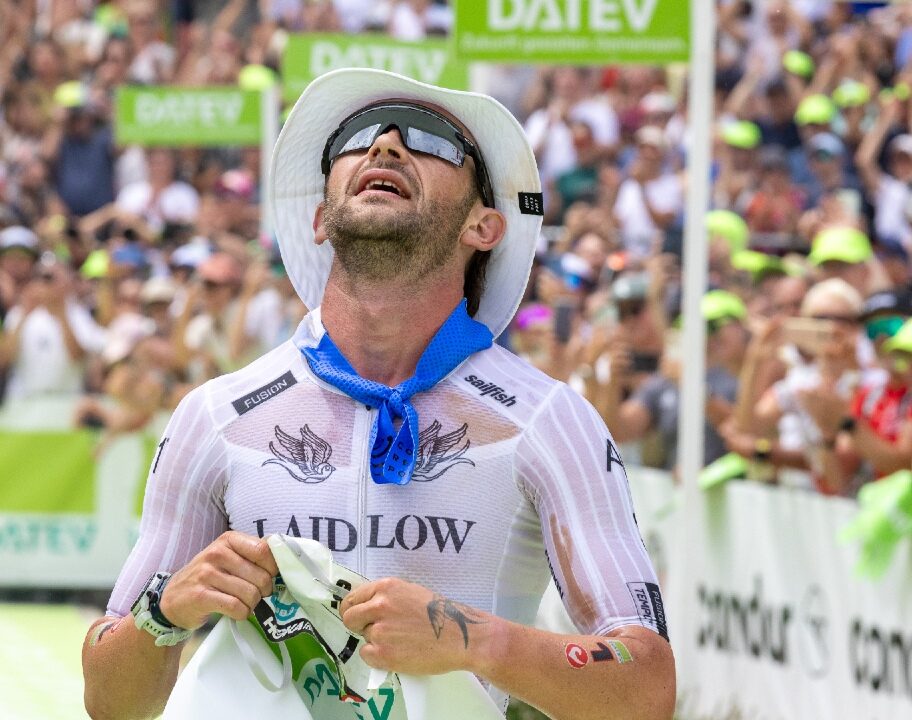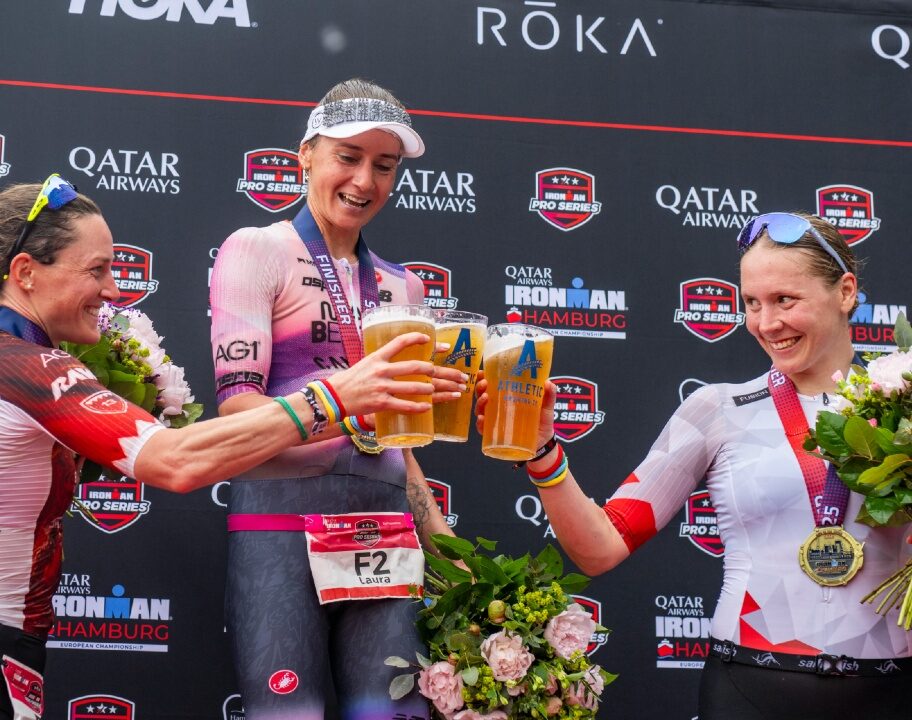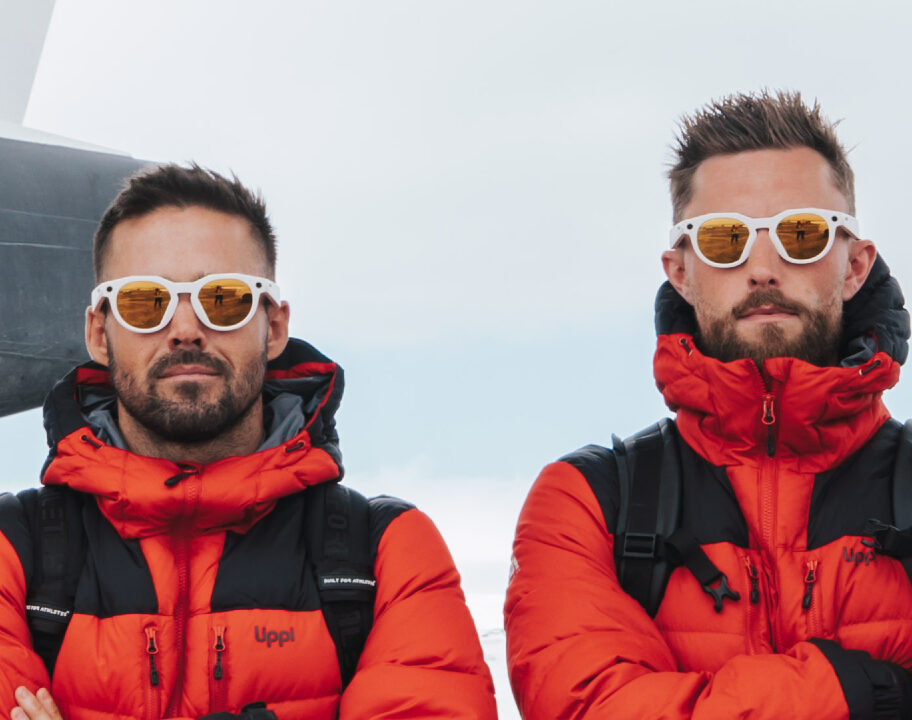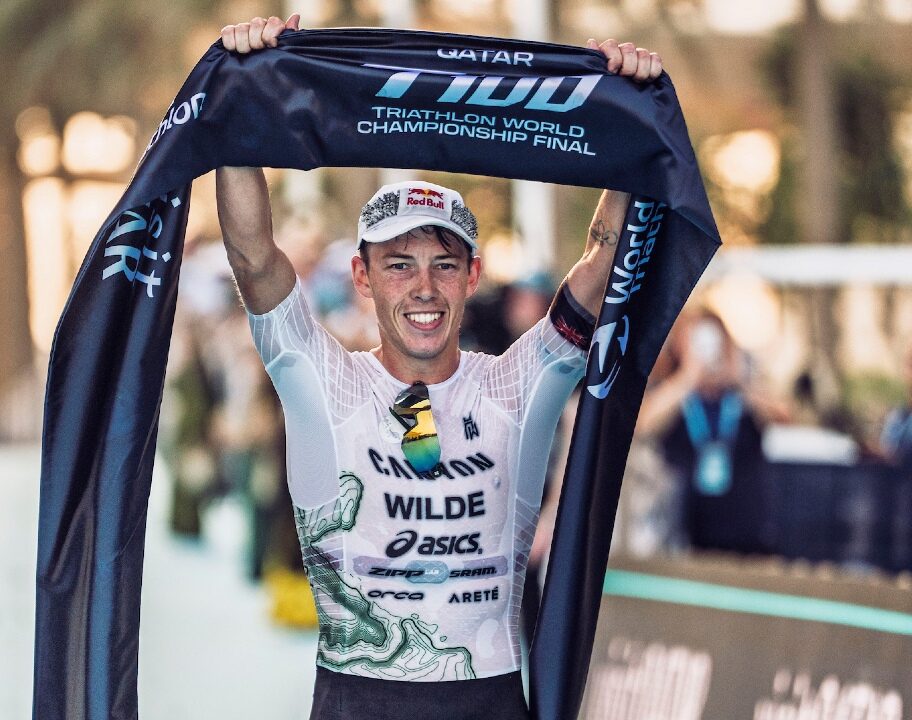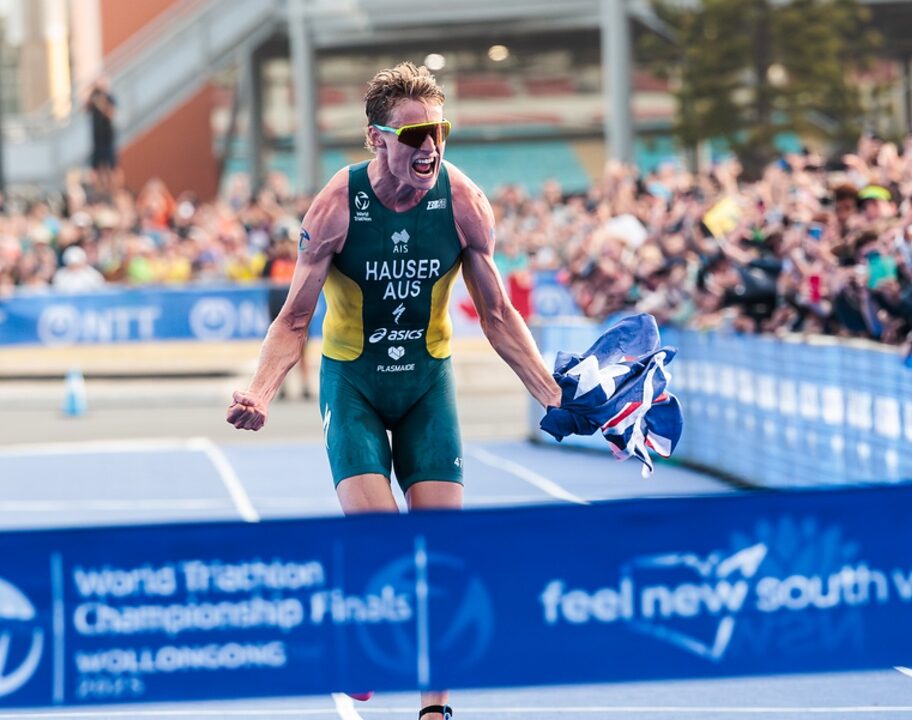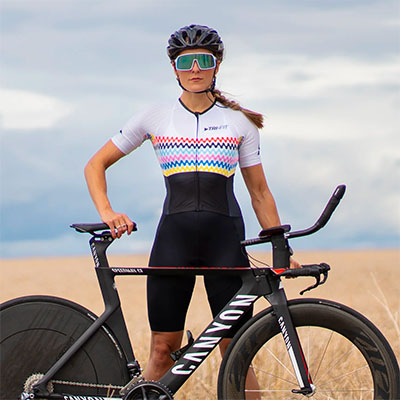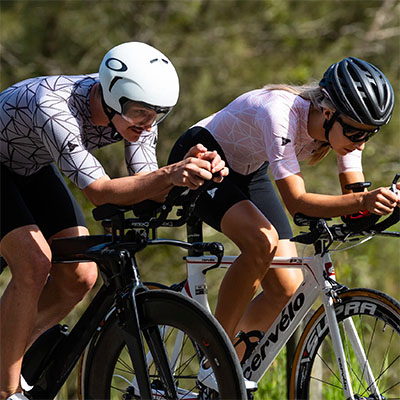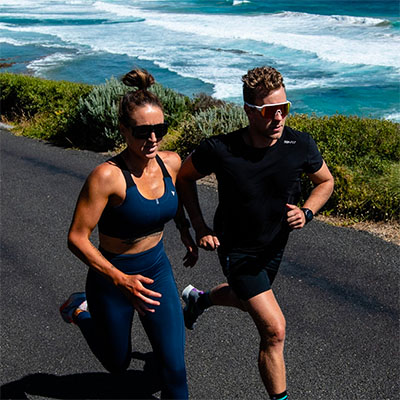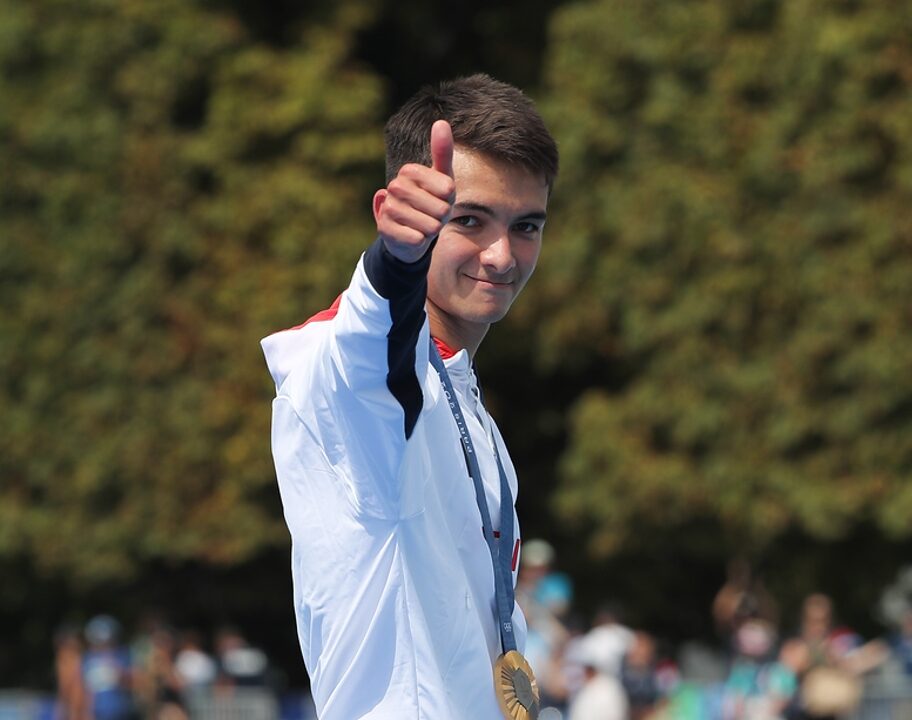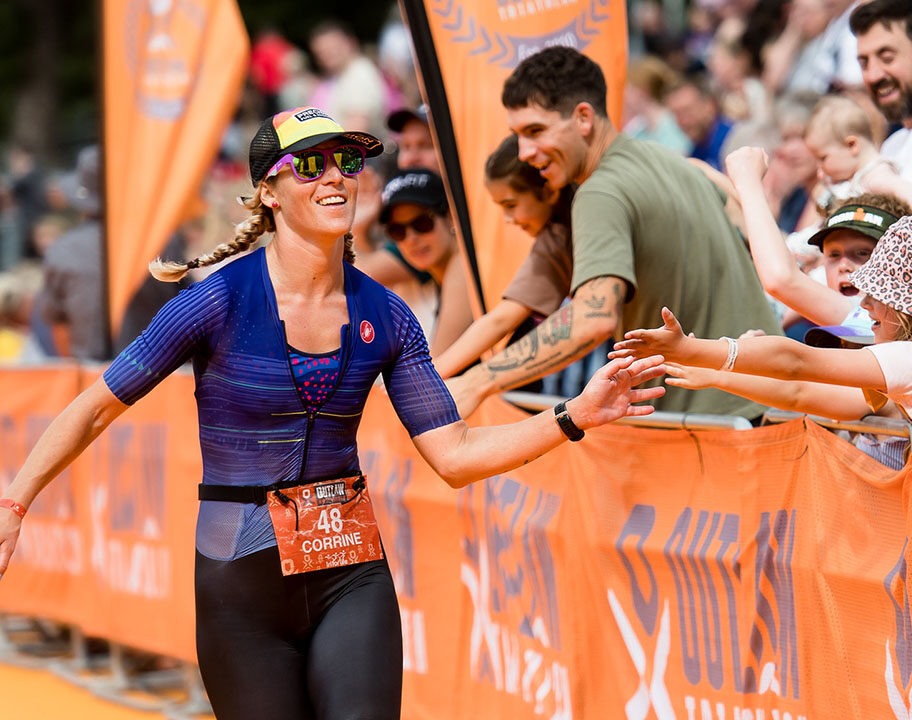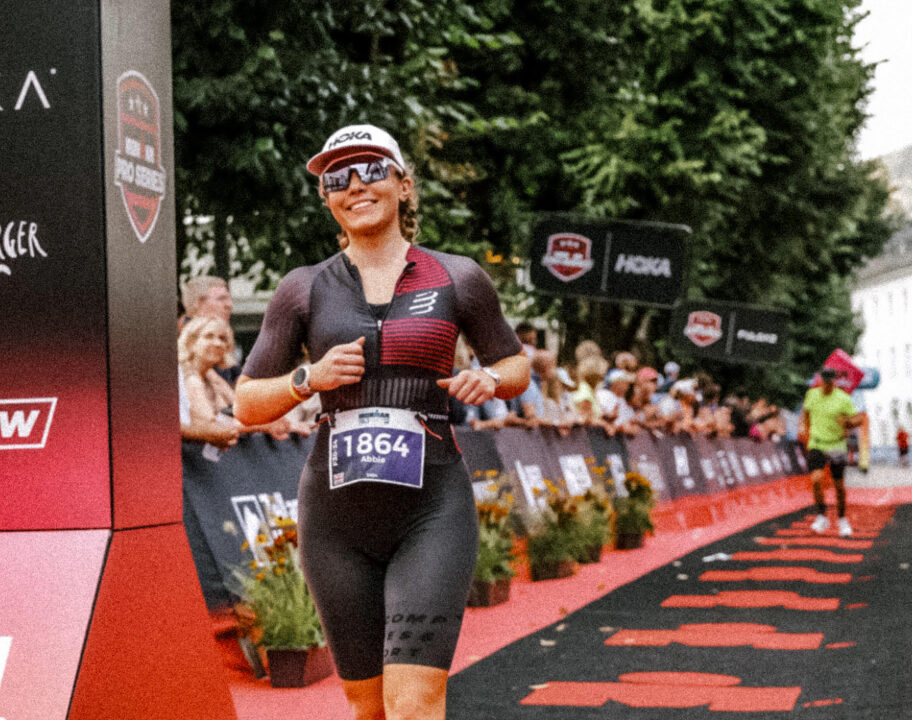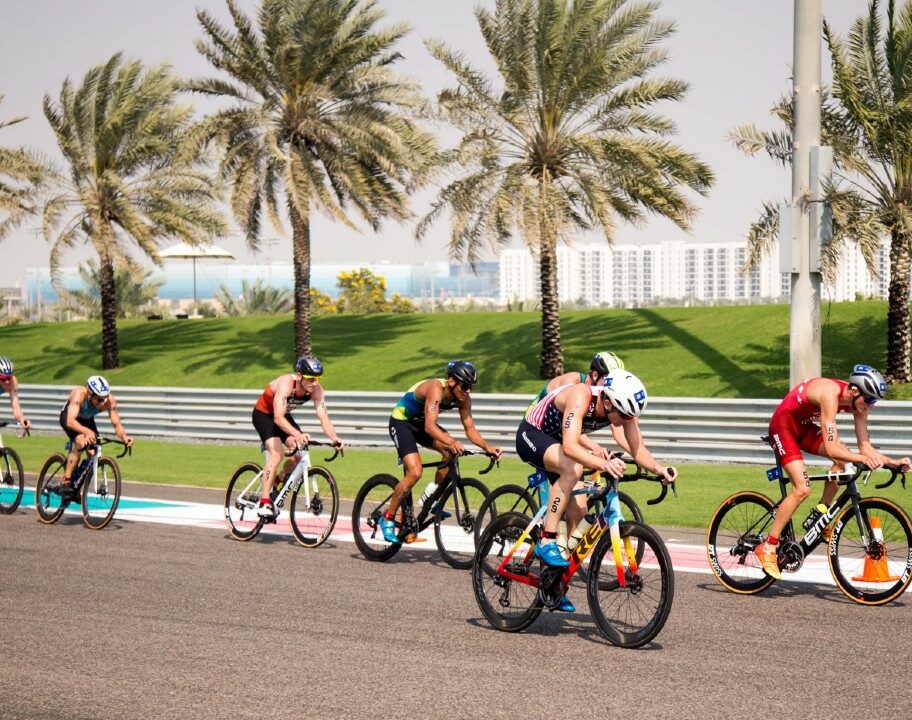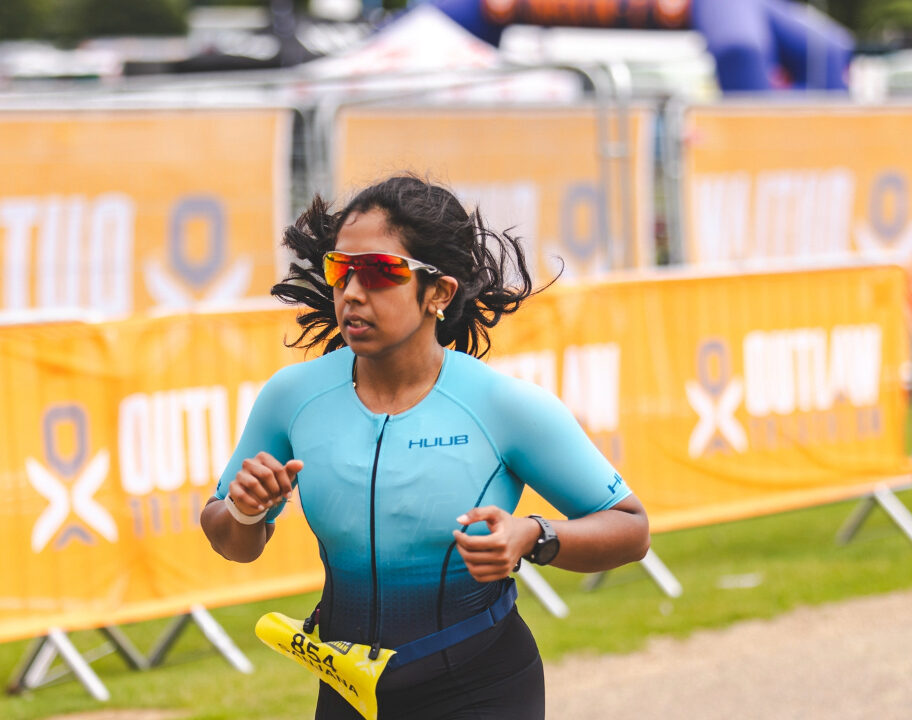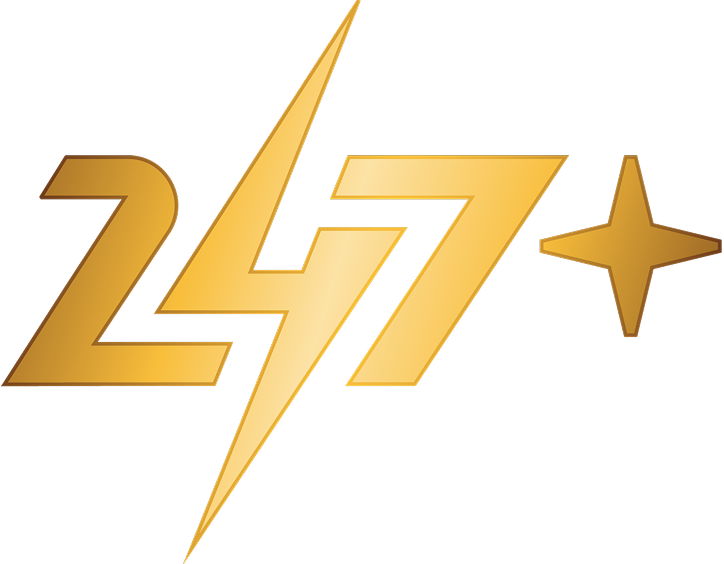The saying goes, ‘bike for show, run for dough’. There is some truth in that. However, although any triathlon, let alone the big dance at Kona, is not often won on the bike, it can certainly be lost on the bike.
Here is our definitive guide to the bike leg of the IRONMAN World Championships Kona 2022, covering the distance, the course, the bike records and cut-offs, drafting, and tech choices.
Kona bike course
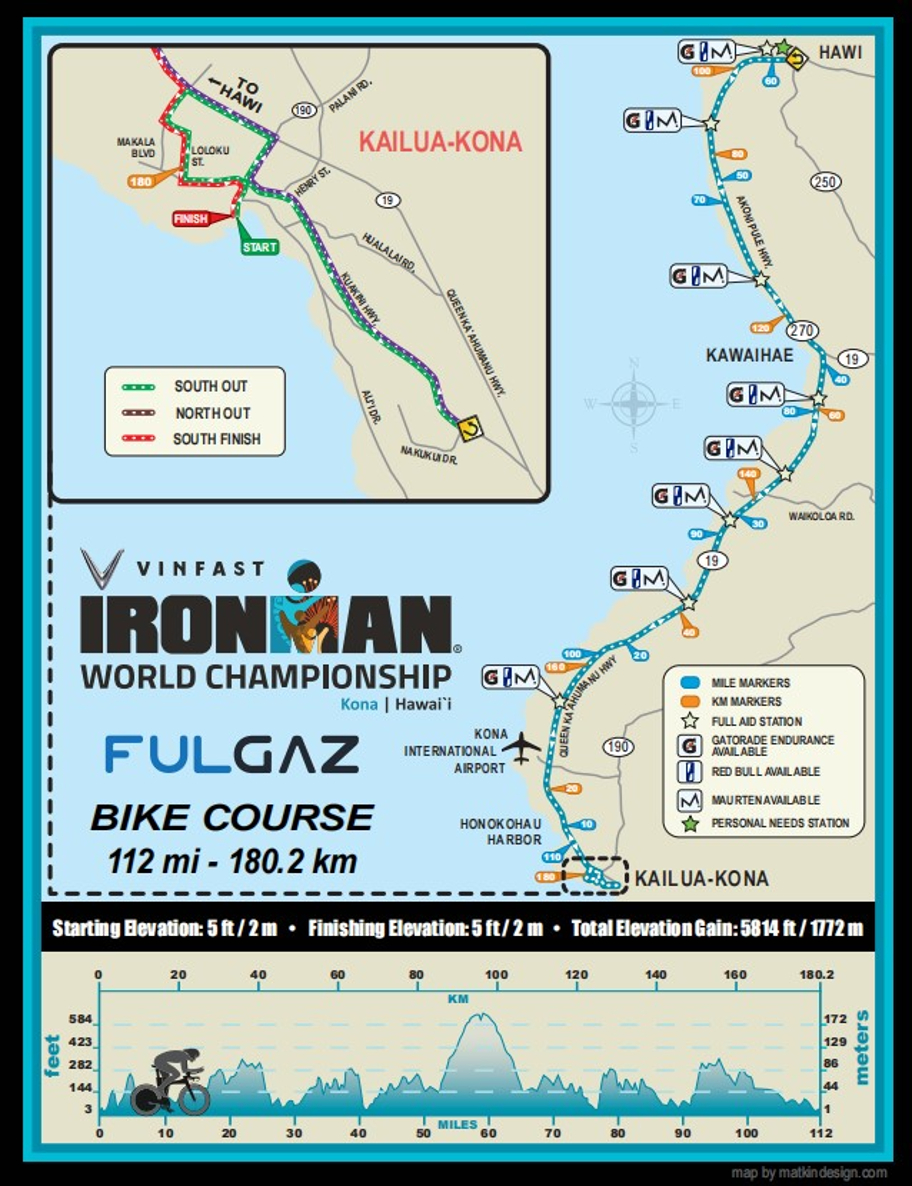
The Kona bike course is primarily an out and back, from the race HQ at Kailua-Kona to Hawi, along large well-maintained roads, across lava fields, with the lovely views of the ocean for company.
There is often the misconception that the Kona bike course is flat and easy. Although there are bike courses with far more elevation gain, the Kona route is far from flat. With a total elevation gain of 1,772m, and the majority of that occurs on the climb to Hawi (see below), it is most accurate to say the course is rolling.
For the 2022 editions of the Ironman World Championships, in part to accommodate increased traffic demands due to the race being held on two days, rather than having completely closed roads, sections of the course that are on wider multi-lane roads are going to be part for the race only and part open to traffic.
Cut-offs and course records
For age-groupers the cut-off for completing the bike course is 10 hours and 30 minutes after their wave start. However, this obviously won’t be a concern for the pro athletes. The fastest men will complete the bike leg in circa four hours and twenty minutes, and the leading pro women will finish the bike in below five hours.
2018 was an exceptional year for rapid bike splits. The five fastest times on record for the male athletes and the six fastest times for the female athletes were all set that year. Australian World Tour pro cyclist Cameron Wurf flew around the course in a blistering 4:09:06 (he also rode a 04:12:54 in 2017); and Daniela Ryf’s record bike leg, also from 2018, is 4:26:07. However, unlike, Wurf, she went onto win the whole race.
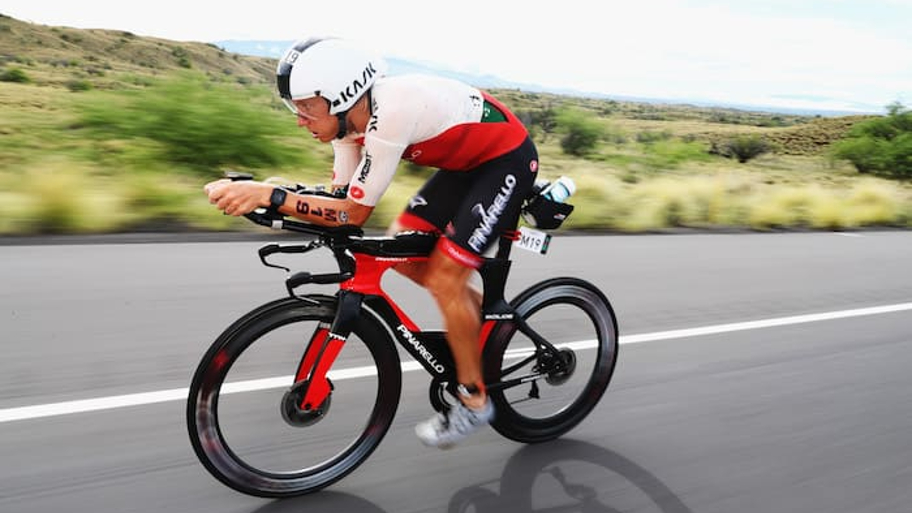
Course breakdown
On the face of it the Kona bike course is straightforward. However, the real test for athletes is the combination of the distance, the terrain, and the potential extreme weather conditions.
For 2022 there have been a couple of minor amendments to the bike course to accommodate the additional athletes that are racing across the two days of competition.
Kailua-Kona
Out of transition the cyclists first complete a short circuit of Kailua-Kona, which for 2022 includes a one-block detour around the Target at mile one of the ride, and an out-and-back on the Kuakini Highway. There is then the comparatively short but sharp kick up Palani Road, before turning left on to the famous Queen Ka’ahumanu Highway (Queen K).
Queen K
The Queen K is synonymous with Kona and constitutes the majority of the bike course. On the way out the Queen K leads the athletes north across the lava fields.
After around 10 miles, having passed the airport, the bike course flattens out and allows the riders to get into more of a rhythm.
Hawi Express
Close to 60km into the bike leg the riders reach the Port of Kawaihae. The riders turn left off the Queen K and start towards Hawi.
This is probably the first time, since the punchy slopes of Palani Road, that the riders will get out of the saddle and that some of the pre-race favourites may start to struggle to follow the other contenders. Likewise, in the age-group races where larger groups may have formed, the ride up to Hawi will likely begin to break up the fields.
U-Turn at Hawi
The u-turn in Hawi is arguably where the race really starts and this year, in response to the pro athletes’ transition being moved on to Ali’i Drive, the turnaround has moved 130m further into Hawi.
As the riders begin to retrace the outbound route they will get a better idea of where they are in relation to the rest of the competition.
Although the winds on the ascent to Hawi can be challenging, the descent from Hawi is often where the island’s notorious winds are at their strongest and most dangerous. This presents obvious challenges for the riders, but at the same time can allow the more confident riders to press on and make some time up on their competitors.
Long road back
The remainder of the course retraces the outbound route. After returning to Kawaihae, the riders will experience false flats and strong winds.
The field is likely to start to break up with the strongest riders coming to the fore, with others deciding to knock back their effort and save themselves for the run.
Bike tech choices
No disc wheel
Due to the treacherous and uncertain wind conditions, riders are not permitted to use rear disc wheels, and only the brave will use deep section rear and front wheels.
Skin suit
The unique environment of Kona is likely to be the biggest influence on the clothing decisions.
Athletes will be wearing a range of tri-suits, from one-piece costumes to separate tops and bottoms, and either sleeved or sleeveless suits.
Sleeved suits are more aerodynamic (high-tech material slips through the air better than bare skin) and offer greater protection from the sun. However, they may not be as cool or offer the same levels of ventilation.
Further, some athletes may decide to do a full costume change in T2 after the bike.
Helmet
The humidity and heat mean that helmet selection at Kona is the ultimate balance between aerodynamics gains and ventilation.
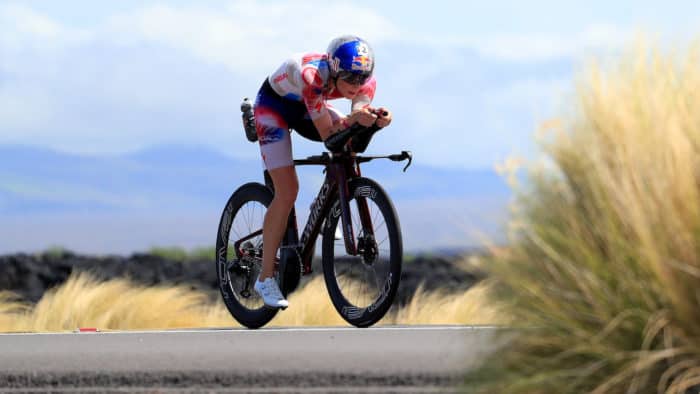
An aero helmet, assuming it suits the rider’s position on the bike, will be more aerodynamic and can save watts across the whole ride. However, if the rider overheats or sweats too much to the extent it is detrimental, the aero advantage will be more than offset and contribute to a tough run off the bike.
Chrissie Wellington, one of the Kona and Iron-distance greats, would opt for a standard road helmet over a time trial helmet. Whereas Jan Frodeno, male Kona record holder and three-time winner, favours a classic long-tailed time-trial helmet, seeking aero gains and embracing the reduced ventilation.’
Tyre Choice
Tyre technology has developed greatly in recent years, and riders now have three main options, each with their own pros and cons:
- Tubular tyres (often referred to as ‘tubs’, the inner-tube is incorporated into the tyre and the tyre is glued or stuck to the rim), are the lightest wheel/tyre combo and have a low risk of pinch punctures, but removal and installation can be difficult (see below).
- Clinchers (which involve a tyre and a separate inner tube), are probably the safest bet. Not the fastest (arguably) and more prone to punctures, but you know what you are facing, and can carry spares accordingly.
- Tubeless tyres (which do not have an inner tube, rather just a tyre and sealant), offer the best rolling resistance, and should mean that any puncture is self-sealed. The danger is when the sealant does not work, leaving the athlete at the side of the road, trying to remove a tubeless tyre.
Irrespective of the athlete’s tyre choice, the set-up should be tried and tested. Normann Stadler, World Champion in 2004, had a torrid time in 2005 after having had a local bike store install his tubs (rather than doing them himself or using his regular bike shop) he was left stranded at the side of the road when he couldn’t remove the tyre due to too much glue!
Hydration and Nutrition
Mastering nutrition is crucial in the Kona environment, in particular the unique problems racing in extreme heat and humidity can cause.
Another consideration on bike set-up is how to ensure you can comfortably reach or access your nutrition and fuel when being buffeted by unpredictable winds.
That was a key aspect of the CADEX Tri bike developed for reigning World Champion Kristian Blummenfelt.
Drafting, the pace-line, and race dynamic
The cycling pace-line is an iconic, yet controversial, part of the Kona bike leg.
Drafting
The IRONMAN World Championships is a non-drafting event, which in theory means that the bike leg should be each athlete against the clock, without any benefit or support from riding with other athletes.
Riders are not permitted to ride within 12 metres (measured from the leading edge of the front wheel to the rear wheel) of the rider in front, that is there must be six bike lengths between the riders. This is known as the ‘drafting zone’.
Pace-line
However, even being six bike lengths behind another rider provides a significant drafting benefit, hence the riders creating a pace-line.
On the face of it, irrespective of the benefits or otherwise of being only 12 metres back from the rider in front, the rules regarding drafting and the drafting zone appear fairly simple. That is, until you consider the following:
- A rider has only 25 seconds to make a ‘pass’, that is to overtake an athlete.
- If riders in the pace-line are positioned evenly, six bike lengths apart, an overtaking athlete will be required to ride past all of the riders to the front of the pace-line, otherwise they are breaking the drafting rules!
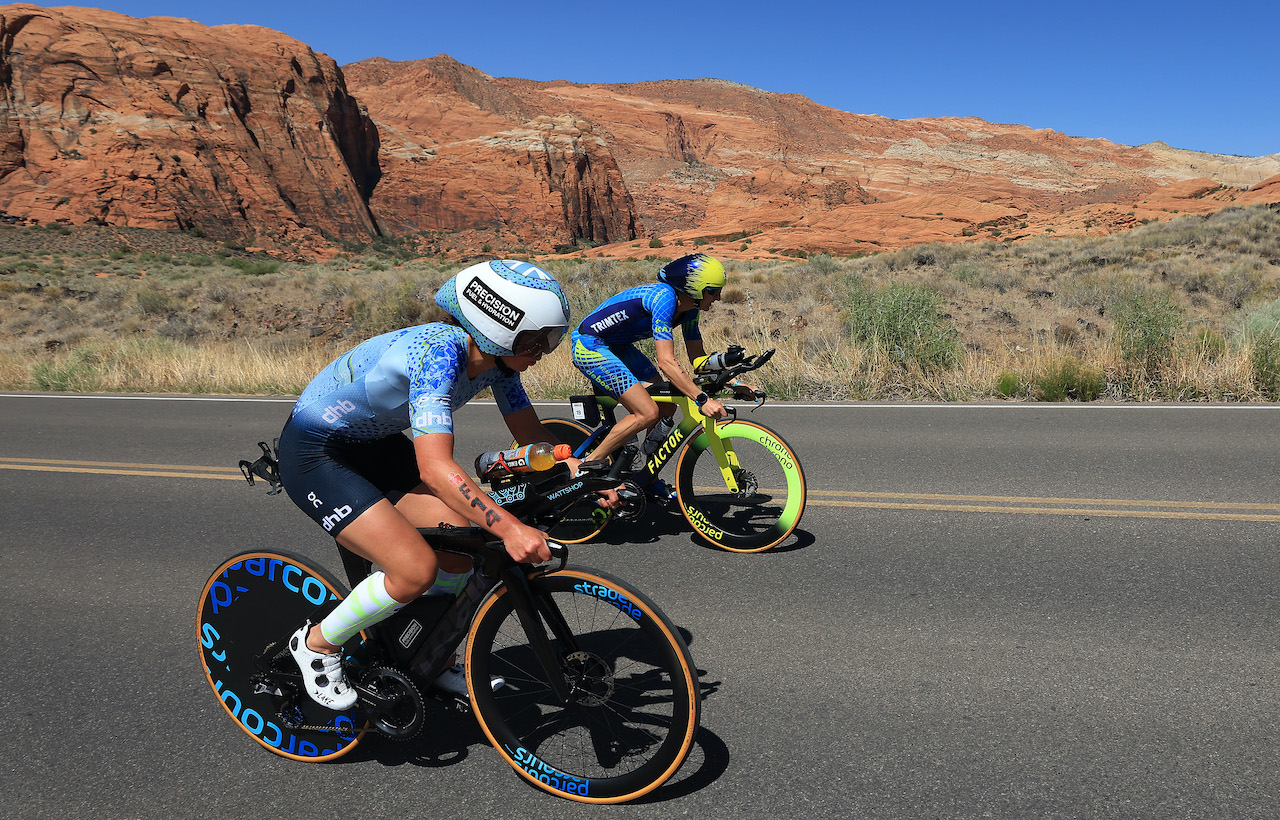
A drafting violation is met with a five minute penalty, and is often one of the most contentious parts of the race.
Joe Skipper and other uber-bikers
This is where the controversy occurs. For athletes that are not the strongest swimmers, but are impressive cyclists (such as Joe Skipper), the pace-line is a huge factor in their race.
For example, Skipper will do his utmost to limit his losses in the swim to allow him to ride up to (and possibly past) the pace-line as soon as possible. Failure to make the pace-line in the earlier part of the bike-leg will place Skipper in the unenviable position of having to ride solo through the field (or for the majority of the 112 miles), expending serious effort, substantially more than those in the pace-line, and burning his matches before the run.
Further, even if an athlete catches the rear of the ‘train’ of lead athletes, due to the rules on drafting, it is very difficult to break away from the competition and make the most of any cycling prowess.
In short, if you can’t catch the ‘train’ of lead athletes on the bike leg your chances of winning at Kona are heavily reduced.
TRI247’s Kona course guides:
- Swim: Waves, swells and tricky sighting
- Bike: Drafting rules and tech choices
- Run: The marathon that makes of breaks you

